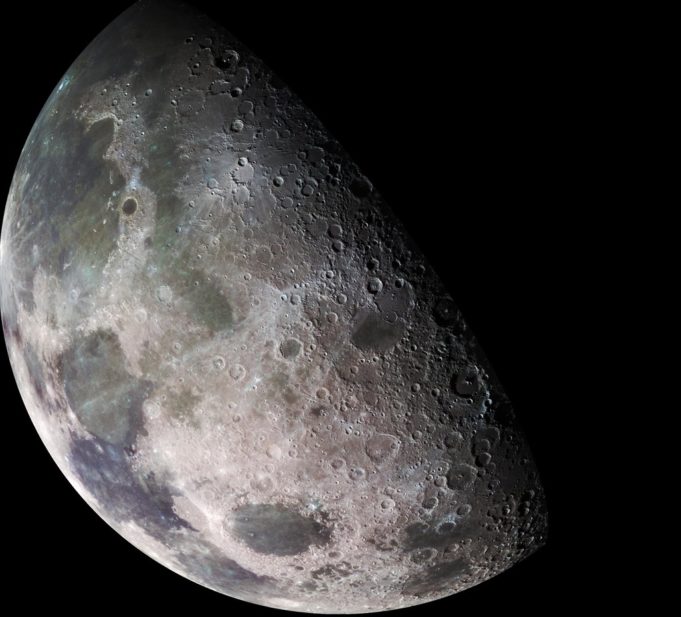Water on the bright (visible) side of the Moon was detected - without a doubt - by the US Space Agency (NASA) and scientists in the US. Scientists also estimate that on the Moon there are many small and large and permanent "water traps", ie areas where water can be trapped permanently, and which cover a total area of up to 40.000 square kilometers.
The announcements were made in two scientific publications in the journal Astronomy "Nature Astronomy" and in a relevant press conference organized by NASA.
The discovery is expected to have significant positive implications for future lunar missions. NASA aims to return its astronauts to the Moon in 2024 as part of the Artemis program, the successor to the historic Apollo program of the 1960s and 1970s.
Previous research had detected the possible presence of water on the lunar surface, especially around the South Pole. But that detection was based on a chemical "signature" in the three micrometer range, which could not tell for sure if it was water (H2O) or hydroxyl (OH) bound to lunar minerals.
This time, researchers led by Dr. Casey Honibal of the Institute of Geophysics and Planetology at the University of Hawaii analyzed data from the Military Infrared Astronomical Observatory (SOFIA), an airborne magnifying glass at a wavelength of six micrometers, they now clearly detected the strong chemical "signature" of the water molecule.
They found that water is present in the southern latitudes of the Moon in a ratio of about 100 to 400 micrograms (μg g ^ 1 H2O). Scientists estimate that water is probably stored in glass or in the gaps between the lunar surface grains, which protect it from the moon's inhospitable environment and thus allow water to remain on the lunar surface.
In the second study, led by Assistant Professor of Atmospheric and Space Physics at the University of Colorado, Paul Hain, scientists report that there are far more hidden shadowy areas on the Moon than previously thought (called "cold traps"). water can remain permanently. They estimate that there are hundreds to thousands more micro traps (up to one centimeter in diameter) than larger water traps (up to one kilometer in diameter), which can be found at both poles.
The researchers estimate, based on data from NASA's LRO (Lunar Reconnaissance Orbiter) spacecraft orbiting the Moon, that about 40.000 square kilometers (of the approximately 38 million square kilometers that are the total lunar surface) have the potential to trap water in various sizes and shapes, of which 60% in the southern hemisphere, at latitudes greater than 80 degrees. 10% to 20% of the total area of permanent water traps is estimated to be tiny.
"If one imagines standing on the surface of the moon near one of its poles, one will see shadows all around. "Many of these tiny shadows can be full of ice," Hein said. "If we are right, water is going to be more easily accessible as drinking water, as rocket fuel or for anything else NASA needs water," he added.
According to American researchers, some lunar "cold traps" exist in a state of eternal darkness, as they may not have seen a single ray of the Sun for billions of years.
These findings, according to the scientists, show that water has been produced or landed on the Moon through various processes (eg from occasional falls of micrometeorites or larger asteroids and comets) and it is very likely that it has been stored in small and large traps. in both polar regions. At present, however, according to scientists, it can not be proven that these "traps" really hide water, unless a robotic rover or an astronaut goes there and digs. Future missions to the Moon will provide the definitive answer.
In the NASA interview, the findings were presented by Nassim Rangwala (scientist at the SOFIA observatory at NASA's Ames Research Center), Paul Hertz (head of NASA's astrophysics department), Jacob Blitzer (NASA) ) and Casey Honibal (lead researcher on the second Cold Trap Study).
With information from ΑΠΕ ΜΠΕ
